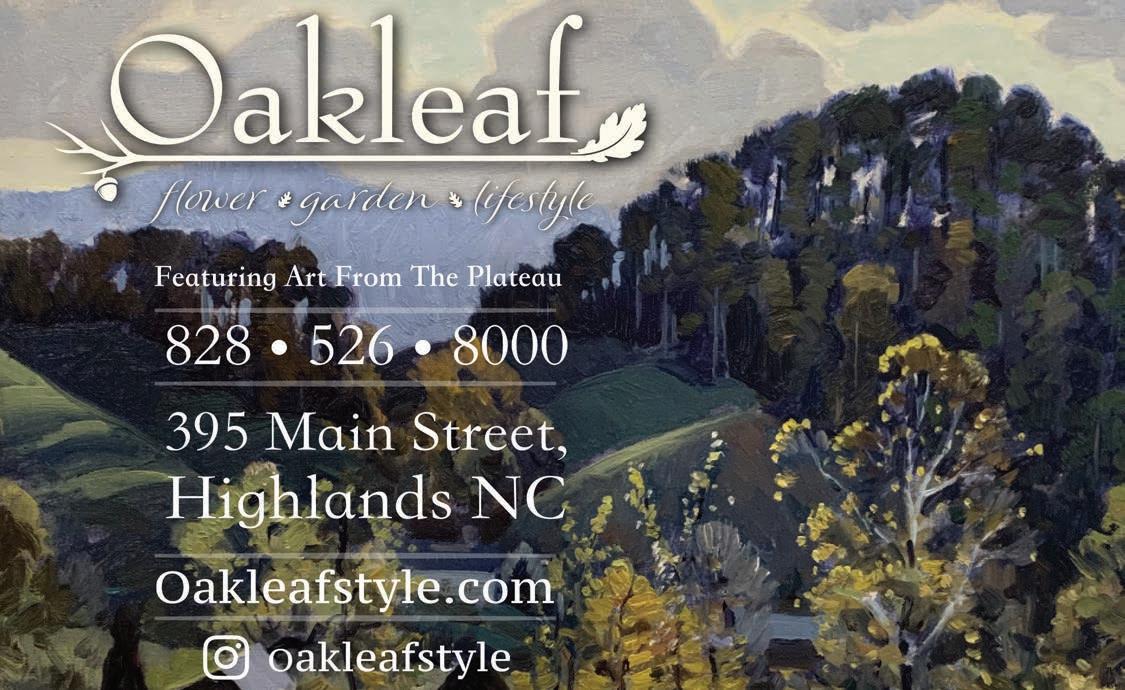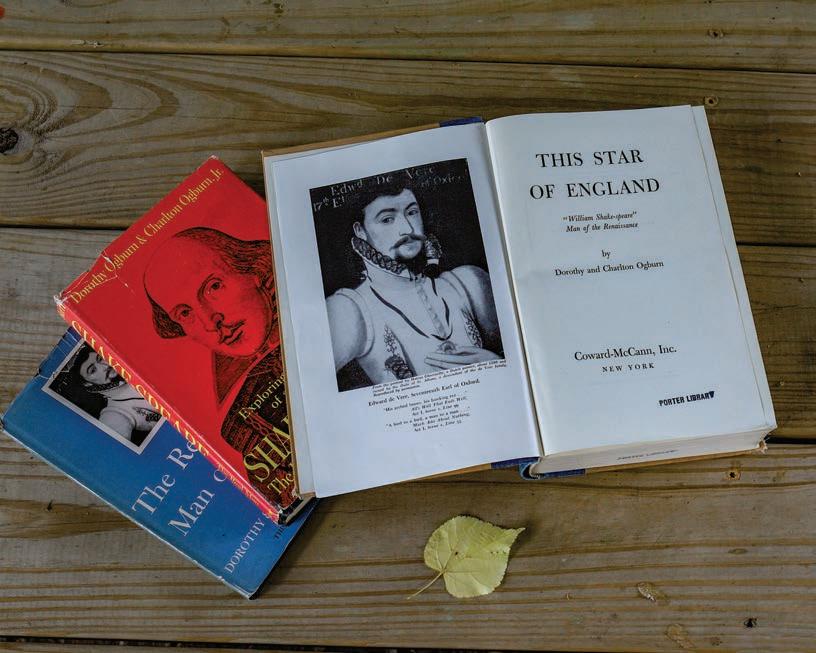
11 minute read
Women’s Equality Day
Eleonore Raoul Greene brought a generous, progressive spirit to every endeavor she undertook. She’s still remembered in Highlands.
It was 1915. A striking, golden-haired woman, her green eyes beaming confidence, sat atop a white stallion and trotted down Peachtree Street in Georgia’s first women’s suffrage parade.
Eléonore Raoul Greene, born in 1888 in Staten Island, New York, eventually served as chair of the Fulton and DeKalb County branches of the Equal Suffrage Party of Georgia. In the early 1920s she played a large role in organizing the Atlanta League of Women Voters.
Along the way she was the first female student at Emory University Law School, though her acceptance was tenuous.
When she entered the all-male law school, Chancellor Candler gave her a once-over and announced, “Women aren’t allowed here, miss.”
She gave him a once-over and replied, “Bishop, I have learned enough law to know I can sue you for breach of promise if you do not allow me to stay.” He didn’t realize she’d already been accepted while he was out of town.
Clever girl.
In 1920 she became the Law School’s first female grad.
Her family moved from Atlanta to Highlands in 1916. Rosine Raoul needed treatment for tuberculosis at the sanitorium and bought the old Dobson house from Gustav Memminger at Main and 1st. She named it Rosemary after herself and her mother. When she died in 1918, she left Rosemary to her sister, Eléonore.
A century ago, as the Highlands Bank opened, Walter Reese needed to borrow $1,800 to pay for his lumber. When his debt came due, he didn’t have the money.
Walter’s son Marshall recalls the bank showing up to auction off his dad’s land in parcels. They were setting up tables (near today’s Dusty’s Rhodes Superette and Dillard Road) when Eléonore happened by. Walter told her what was happening. She wrote him a check on the spot.
Eléonore endeared herself to Highlands to such a degree a street bears the Raoul name.
Ran Shaffner’s Heart of the Blue Ridge is a great read in a front porch rocker. Catch up on local history by visiting: highlandshistory.com or emailing hhs@highlandshistory.com.
by Donna Rhodes
De Vere, and da Rest
Stuart fearlessly dives into the Highlands chapter of the ongoing debate over the authorship of Mr. Shakespeare’s magnificent plays.


Who wrote the plays attributed to “William Shakespeare” of Stratford-upon-Avon?
Highlands summer resident and mystery novelist Dorothy Ogburn (1890-1981; discussed here last month) along with her husband and son—both named Charlton—were sure the man behind the Sonnets and Hamlet was actually Edward de Vere, the 17th earl of Oxford. “Oxfordians” don’t believe the son of a glove maker had the education and worldliness to write the sophisticated works attributed to the Bard.
De Vere (1550-1604), on the other hand, was descended from one of the oldest families of England, had spent years abroad, especially in Italy—scene of so many Shakespeare dramas—and was known to write poetry and plays, none of which survived (or did they?).
English schoolteacher Thomas Looney’s 1920 book Shakespeare Identified started the agitation.
In America, the Oxford cause was taken up by Charles Wisner Barrell, whose 1937 article in the Saturday Review of Literature infected Mrs. Ogburn.
Charlton Sr., a prominent lawyer, represented Barrel in a libel case against the Folger Shakespeare Library in Washington, which termed Barrell’s research fraudulent. The Ogburns wrote numerous books supporting de Vere and claimed in their 1300-page, 1952 doorstop This Star of England, that the famous earl of Southampton (the “fair youth” of Shakespeare’s sonnets), was in fact the illegitimate son of de Vere and the “Virgin” Queen Elizabeth I, which made the whole subject even juicier.
In his own writings on the controversy, Charlton Jr. dropped the royal love-child claim of his parents but debated William F. Buckley on behalf of Oxford on Firing Line on TV.
But why was de Vere’s purported authorship a secret? According to the Oxfordians, it’s because his wife’s father, the powerful William Cecil, the queen’s chief adviser (and ancestor of the Cecils who own Biltmore) despised both the theater and his son-in-law.
Shakespeare scholar Samuel Schoenbaum called the Ogburns’ de Vere tomes, “the most monumental contribution ever made to the literature of heresy.”
I hope he’s right, or we’ll have to change our bookstore’s name from “Shakespeare & Company” to “De Vere and da rest.”
by Stuart Ferguson, Local Historian, CoOwner Shakespeare & Company


Preserving Native Cane
Humble River Cane was essential to the everyday lives of the Cherokee.
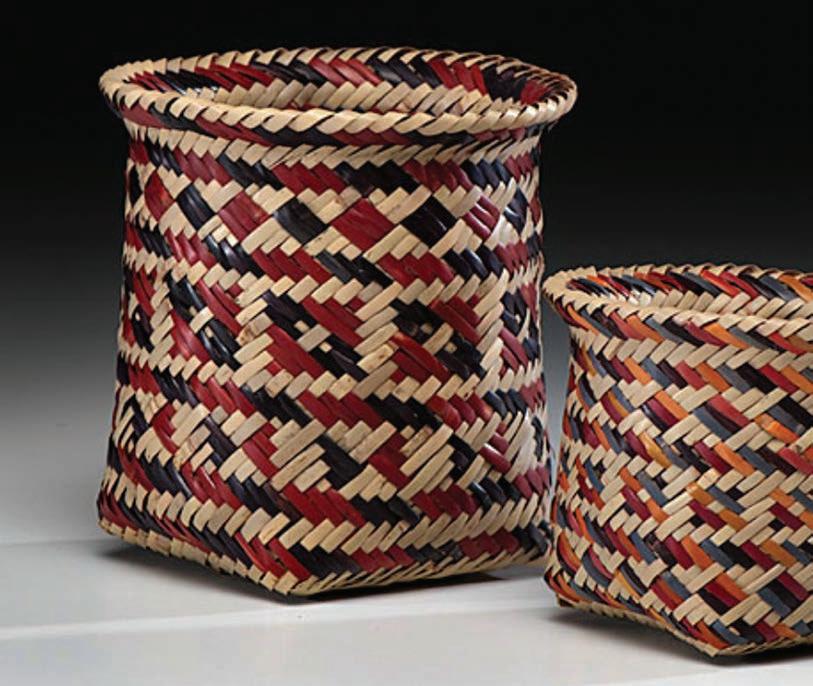

In June Alex Macaulay, a professor of history at Western Carolina University, introduced at Cashiers Historical Society a symposium featuring a panel of local experts who shared thoughts and insights on the environmental, cultural, and material importance of River Cane.
Dr. Macaulay explained, “Over the past several years, various conservancies, educational institutions, and state agencies have collaborated with the Eastern Band of the Cherokee Indians (EBCI) to restore and revitalize this versatile and essential cultural and ecological resource.”
River Cane is considered a native bamboo plant and, at one time, European settlers wrote of vast stretches of rivers and swamps covered in cane, called “canebrakes.” The cane was of vital importance to Native Americans in that it provided the material to weave utilitarian items, such as baskets. Although it still grows in Western North Carolina, primarily along rivers and streams, river cane has been cleared and destroyed in many areas.
One of the panelists was Adam Griffith, director of the Revitalization of Traditional Cherokee Artisan Resources Program, a program that assists ECBI in the preservation of natural resources for use by tribal artisans. From 2008 to 2014, he was director of the River Cane Restoration Project at WCU. He explained that his work has taken him all across North Carolina.
Another panelist at the June symposium was Mary Thompson, an award-winning second-generation basket weaver, potter, and member of EBCI, from the Big Cove Community in Cherokee. Her work is in universities, museums, and private collections. Her work is published in the National Basketry Organization’s Tradition & Innovation in Basketry Today, the invitational exhibition All Things Considered, and in WNC Mountain Living Magazine. She is a teacher of the craft, and at the symposium, Thompson demonstrated basketry.
David Anderson, who works for ECBI’s Office of Natural Resources as the Horticulture Operations Supervisor, was also on hand to speak about the propagation of native and culturally significant plants.
Although River Cane is considered a critically endangered plant, it is not yet federally protected. However, people are encouraged to protect and nurture River Cane and other native plant species.
by Deena Bouknight

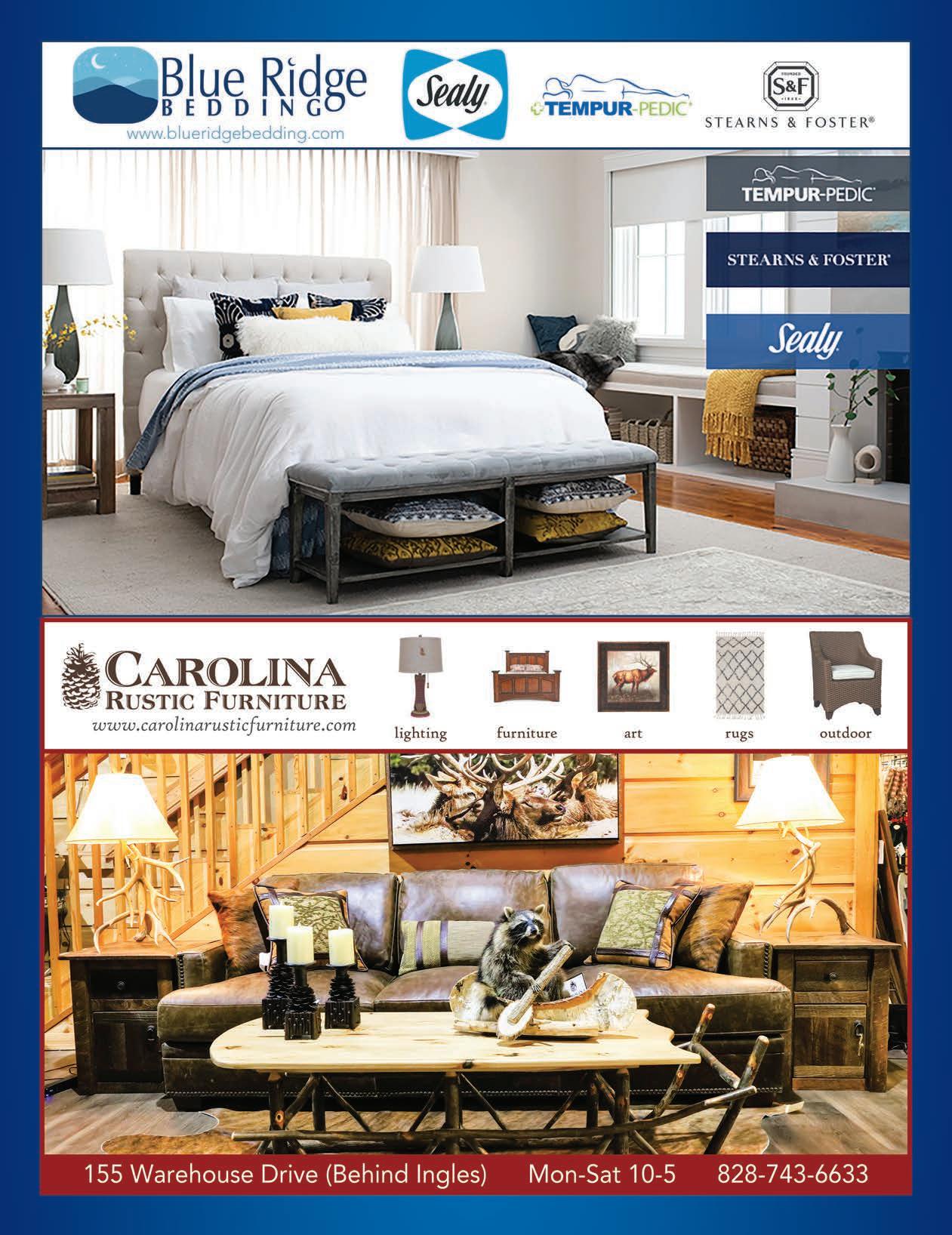
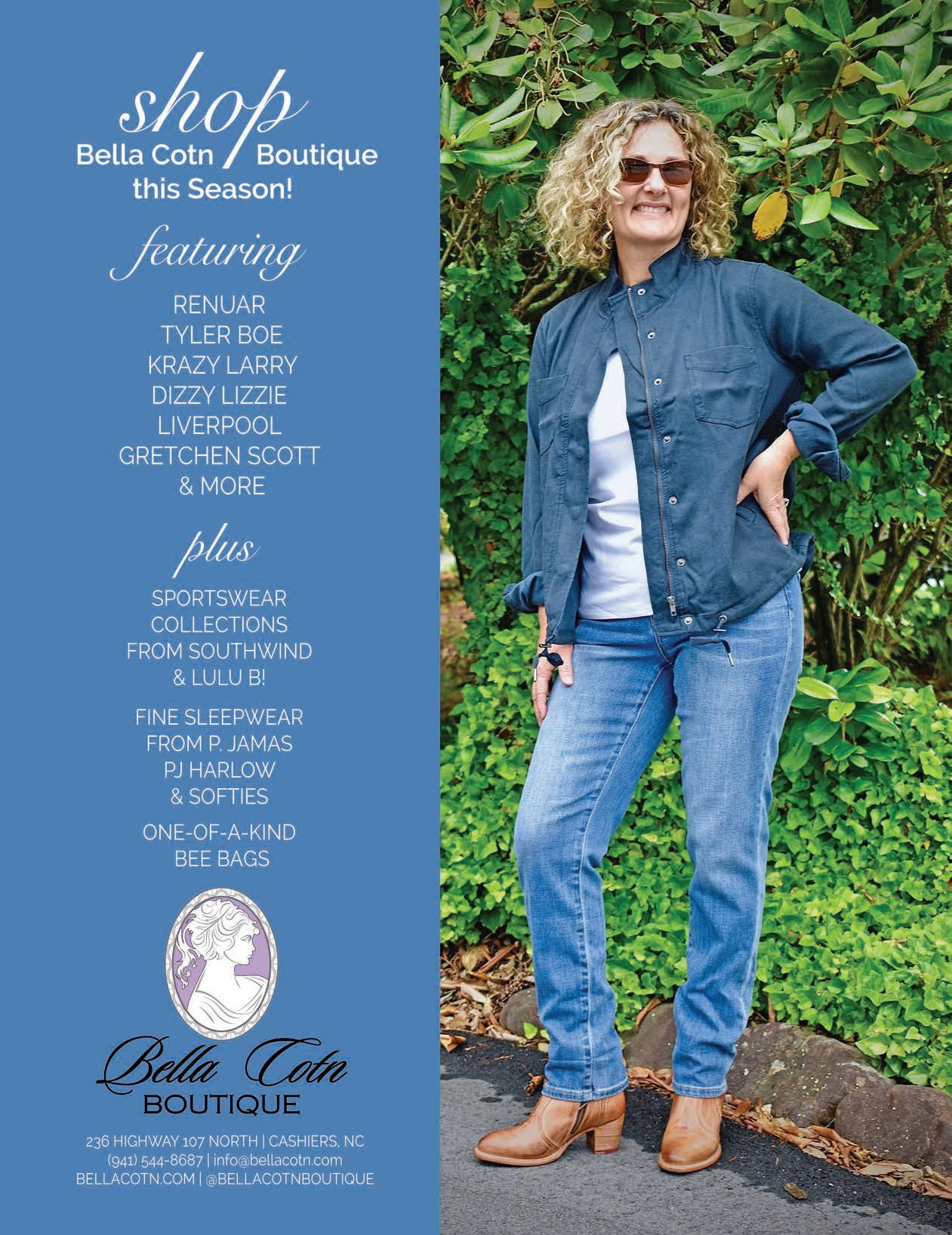

LIFESTYLES & WELLNESS
Pages 188-205
photo by Greg Clarkson
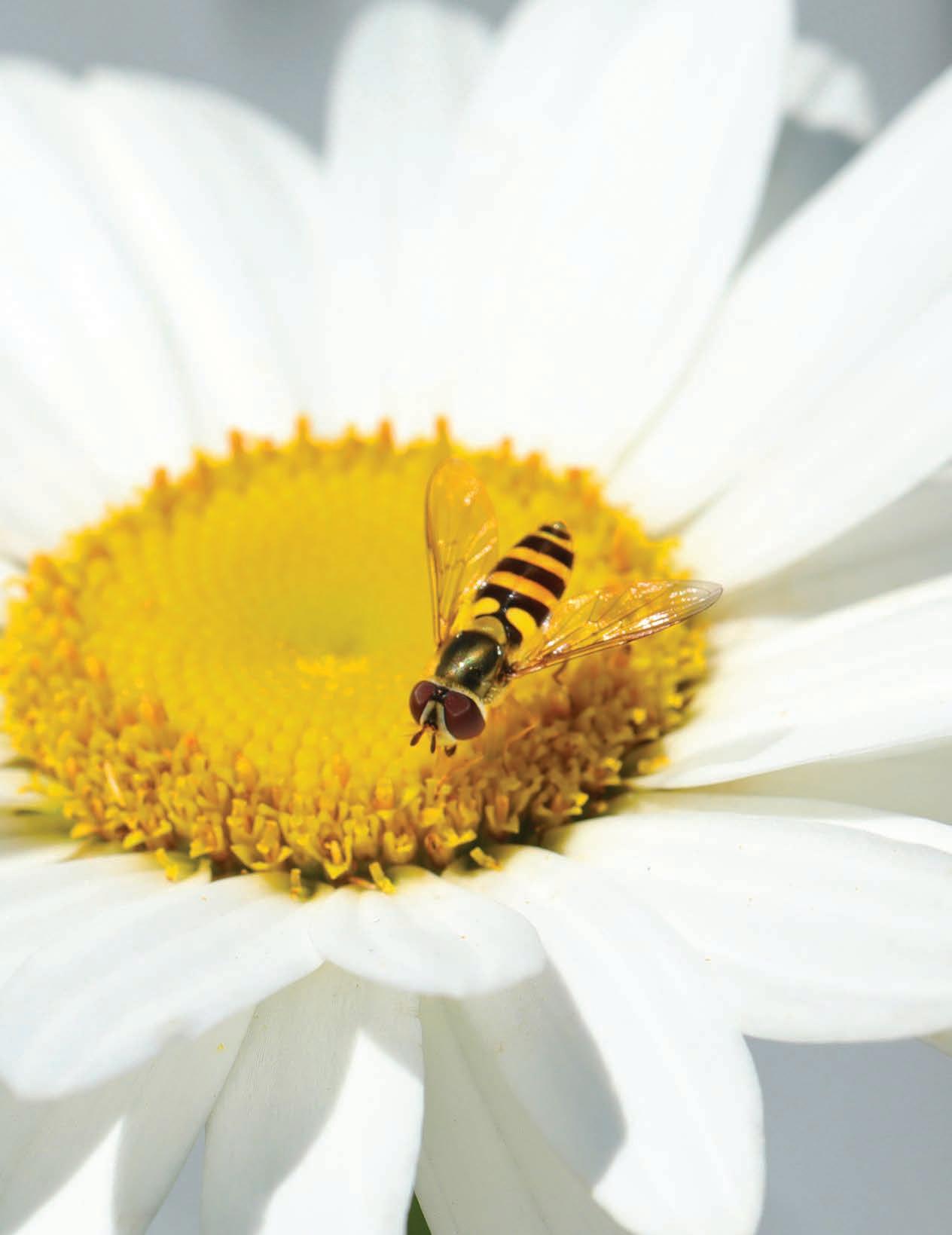
The Point of Their Compass
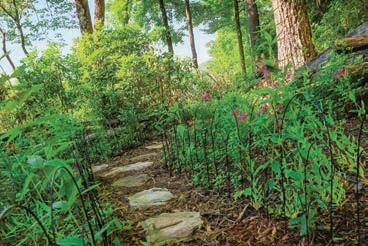
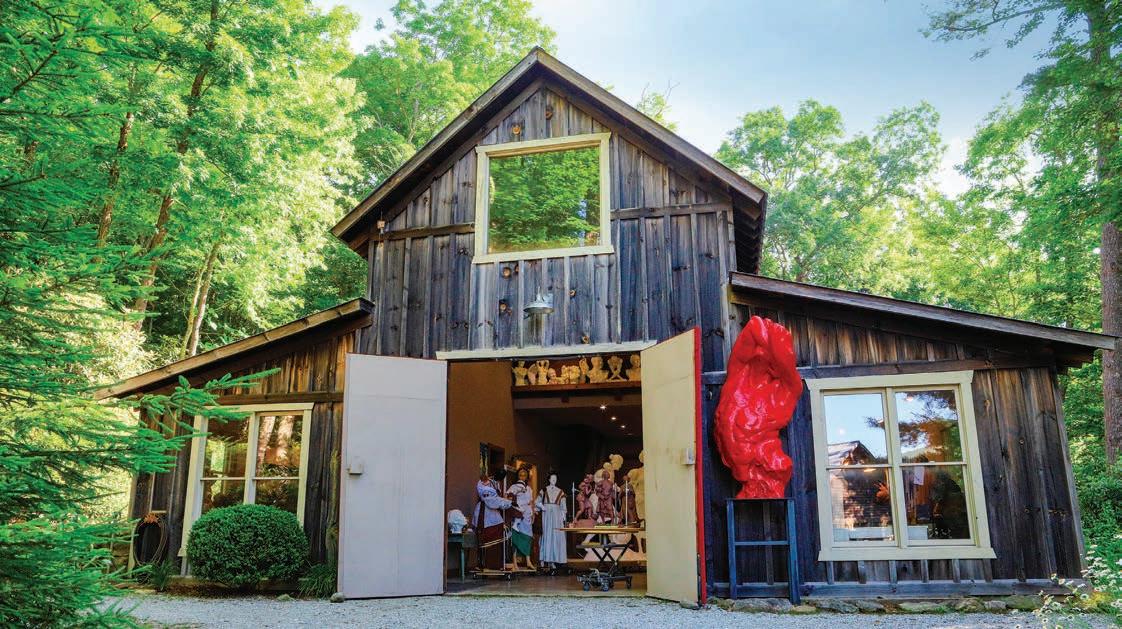
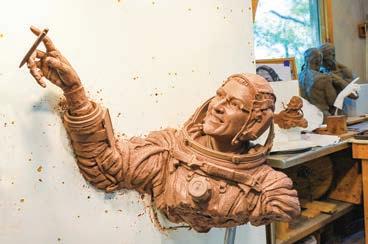
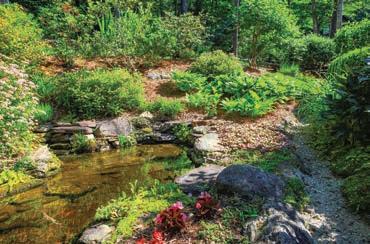
For Odyssey and Wesley Wofford, the gentle spirit of the land infuses every moment of their lives.
There were plenty of places on the planet Wesley and Odyssey Wofford could have called home, but their compass always pointed to Cashiers.
Wesley, Emmy- and Academy Award-winning sculptor and technical trend-setter, believes mountains and sculpture are ancient kindred.
Landmasses are just sculptures on a larger scale. It’s the height, that glorious elevated third dimension that is compelling, so much so that numerous historical and contemporary sculptors chose to build their studios on or near a peak. Perhaps subconsciously they feel at home when there are bumps on their horizons.
Shift the focus from horizon to Wesley’s studio where there are currently eight sculpture-bumps in various stages of completion, all of them female and five of them of color. Three are monuments. The first is Harriet Tubman, The Beacon of Hope (Wesley has another Tubman piece currently touring the country, look for it next month in Sylva) for Dorchester County, Maryland, where Tubman was born and enslaved.
The second, Sowing Seeds of the Future, is a metaphor for women’s historical contributions. It was inspired by three regional women: a Cherokee, a slave, and a pioneer, their lives dramatically intertwined. It will be installed next year in Franklin near Nikwasi, the site of a Cherokee town founded in the 1500s, now part of Macon County.
The third is the nation’s first sculpture of a female astronaut, Christina Koch, entitled Design Your Future, created for the North Carolina School of Science and Math.
Wesley’s studio resembles a barn. He had it built at various heights, the tallest, 24 feet, to house huge armatures, scaffolding, and large creations as well as small. High doors facilitate tricky exits.
The spaces and room shapes (emphasis on height and light) ac-
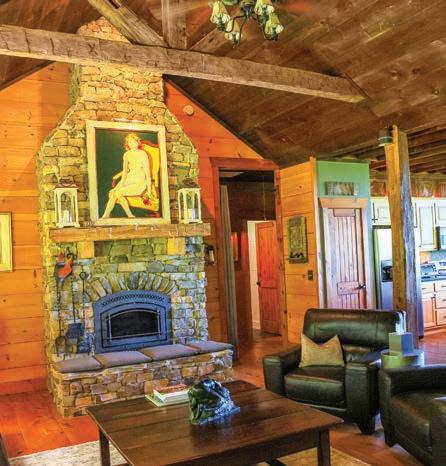
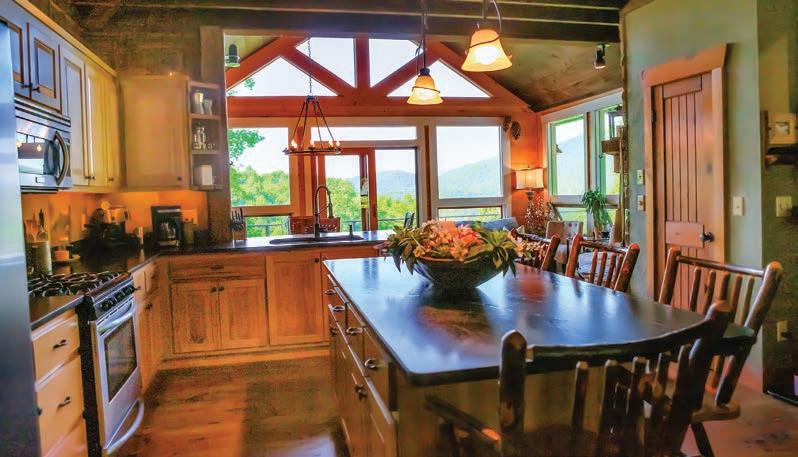
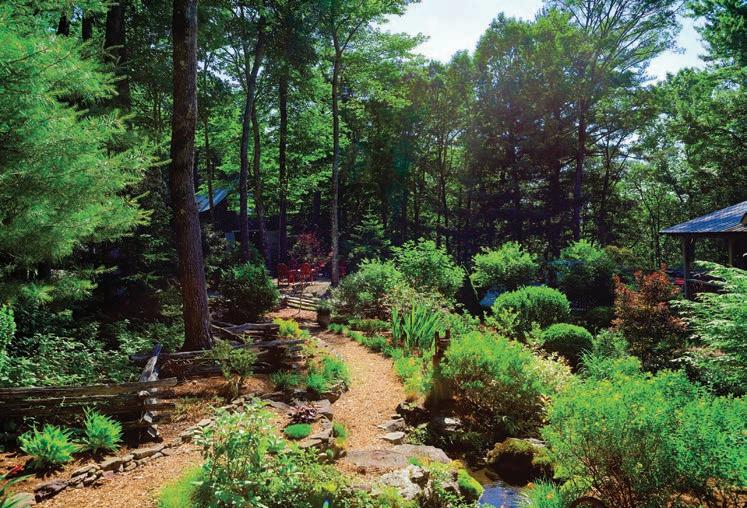
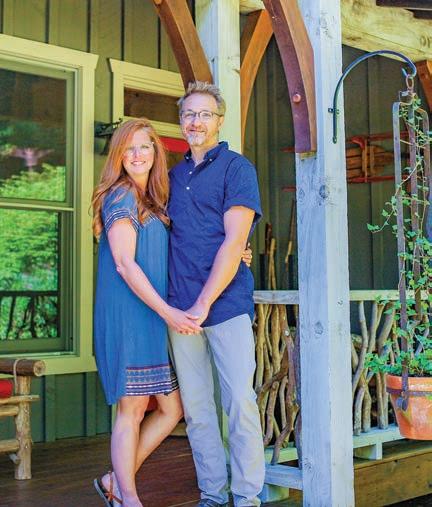
Odyssey and Wesley Wofford
commodate a library, a clean room with a mini gallery, a mold shop, a design room, and a sculpture room. Most cabinets and tools are on wheels, so the studio is in a constant state of flux due to weather conditions, need, accessibility, etc.
Wesley points out the water feature and says, “Odyssey and I channeled the water to complement the cut of the land and layout of the house entrance. The tranquility of trickling water is part of a special sound that is essential to our lifestyle. Our garden oozes tranquility.”
Inside the Wofford home, step into a delightful open space, wood floors pieced together with wide and narrow, long and short, appealingly random boards, anchored by screws, flashing a mechanical contrast to the organic wood.
The linear planks pull you straight back to a windowed back wall with a breath-taking view of Terrapin Mountain. A double deck drops off quickly with a southern view. On first glance it’s the home’s pièce de résistance, and then we begin to take notice of all the other inviting spaces.
The Wofford home and studio serve Wesley’s art well. While the studio is the creative/production area, the home is the place to unwind after the day’s work, enjoy a meal together, review day’s events, then rest, and rewind for the following day. The warmth and comfort of their home sustains this process. Much of it is owed to the view, the comfortable reading nooks, artistic niches, and an outdoor kitchen.
Throughout the house and studio, wood stoves/fireplaces burn fragrant logs to warm toes. The smell itself is a primal calling. An ordinary furnace grate can’t even come close.
As the sun lowers, and that ethereal light radiates from without and within, Wesley and Odyssey offer thanks to the spirit of the land for the sacred spaces throughout their house, studio, gardens, and mountainside.
“Harmony is the key,” says Wesley. “Life is Art, and we reflect that in our living, our work, and our play spaces.”
by Donna Rhodes
Cashiers Dog Park
The Dog Days of Summer are friskier thanks to the opening of the Cashiers Dog Park, located next to the Rec Center.
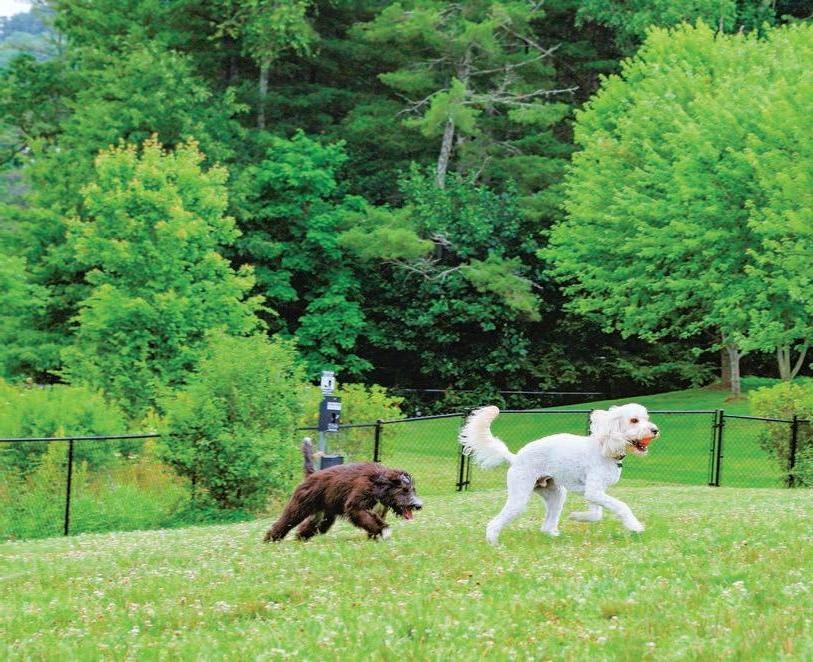

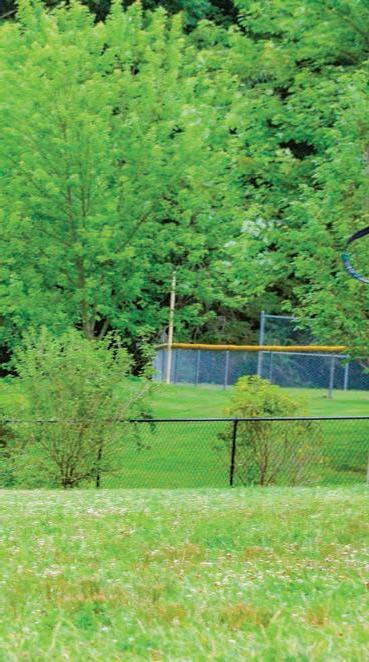
If every dog has its day, then it’s only logical that Cashiers dogs have probably earned their own park.
The new Cashiers Dog Park has to be what local pooches dream about when they’re softly barking and twitching their legs when sleeping.
The Dog Park, a just-completed collaboration between the County Parks and Recreation Department and Vision Cashiers, is located next to the Cashiers Rec Center between the ball fields and across from the soon-to-be-completed Boys and Girls Club of the Plateau.
It features both a space for large dogs and a second space for smaller dogs – the total area is about 1/3 of an acre. It provides a safe and clean environment for dog owners and their furry friends to socialize and exercise. Included in the design are multiple benches, a water fill station, waste area, and open play space.
Jackson County built the park with funds raised by Vision Cashiers and will maintain it going forward. A picnic area and a water fountain will be installed soon.
Vision Cashiers was tasked with raising the expected budget of $50,000. Vision Cashiers is a not-for-profit organization led by volunteers and devoted to improving the Cashiers community.
The group chose to solicit donations from $100 to $1,000 and raised almost $63,000 in a few months. The 166 donors, referred to as “Puppy Patrons,” are listed along with the names of their dogs on the sign welcoming visitors to the park.
A public art project and collaboration with the Cashiers-Highlands Humane Society are also in the planning stages. To learn more about the Cashiers Dog Park or how to get involved in community task forces, visit visioncashiers.com.
by Luke Osteen
Scan for more info
